Inbox and Environment News: Issue 441
March 8 - 14, 2020: Issue 441
Kookaburra Fledglings This Week: Photos Taken March 2nd - 5th, 2020
And a few others that popped in to sing a song this week
27 Crested Terns Killed By Single Dog Attack This Week
March 3, 2020
A single dog attack has killed at least 27 newly fledged Crested Terns at Encounter Bay, SA this week. The City of Victor Harbor & SA Environment and Water have promptly erected new signs.
Dogs have no place in shorebird environments where these creatures, nest, raise young or eat.
The newly fledged crested terns had found a happy place to roost on the man made rock jetty by the boat ramp. Unfortunately there has been a vicious dog attack, killing at least 27 birds. The birds sustained many wounds and it looked like a bloody battlefield. The one in care, that has survived was found floundering amongst the rocks. These little guys are very slow to react and need a bit of time to fly out of danger. A person can almost walk up to them before they fly off. Please respect their space. WWO are working with DEWNR to try and prevent this happening again. Fingers crossed for the juvenile tern that has penetrating injuries and needs X-rays to rule out crushing injuries.
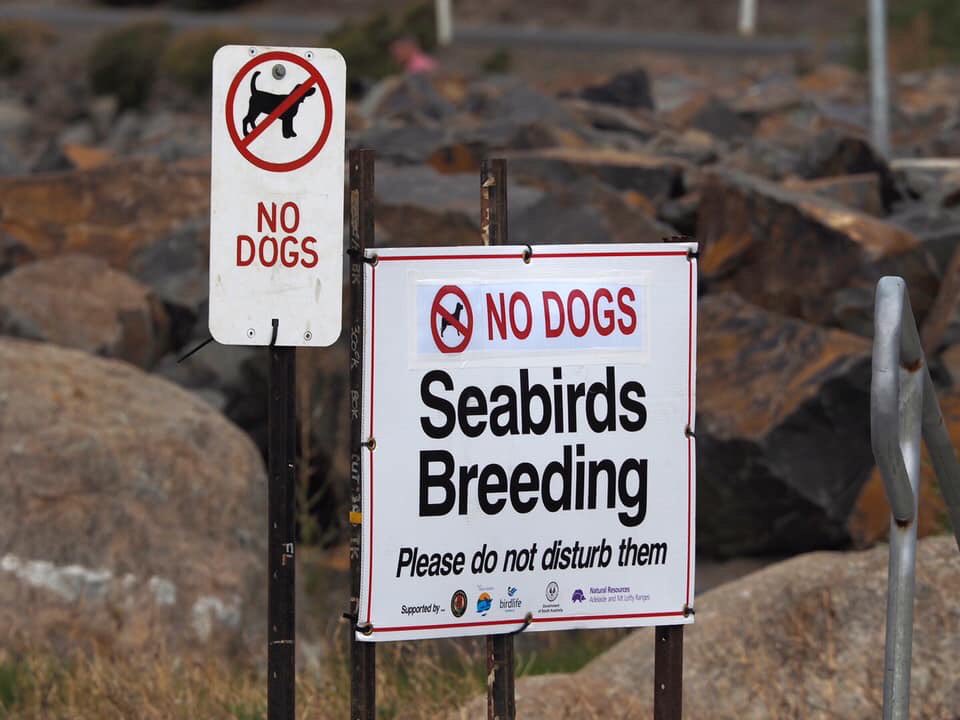
Please Help Sydney Wildlife Rescue: Donate Your Cans And Bottles And Nominate SW As Recipient
You can Help Sydney Wildlife help Wildlife. Sydney Wildlife Rescue is now listed as a charity partner on the return and earn machines in these locations:
- Pittwater RSL Mona Vale
- Northern Beaches Indoor Sports Centre NBISC Warriewood
- Woolworths Balgowlah
- Belrose Super centre
- Coles Manly Vale
- Westfield Warringah Mall
- Strathfield Council Carpark
- Paddy's Markets Flemington Homebush West
- Woolworths Homebush West
- Caltex Concord road Concord West
- Bondi Campbell pde behind Beach Pavilion
- Westfield Bondi Junction car park level 2 eastern end Woolworths side under ramp
- UNSW Kensington
- Enviro Pak McEvoy street Alexandria.
Every bottle, can, or eligible container that is returned could be 10c donated to Sydney Wildlife.
Every item returned will make a difference by removing these items from landfill and raising funds for our 100% volunteer wildlife carers. All funds raised go to support wildlife.
It is easy to DONATE, just feed the items into the machine select DONATE and choose Sydney Wildlife Rescue.
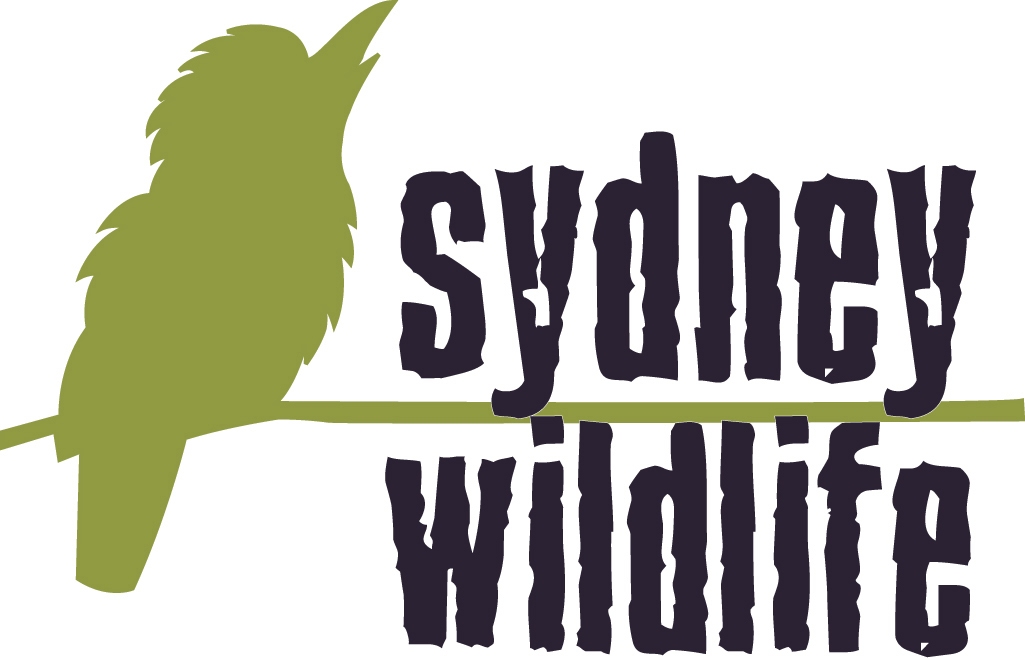
Friends Of Narrabeen Lagoon Catchment: Bushwalks 2020
Bush Regeneration Dinner
- Amuse bouche
- Earth crackers and plant based dips (gf df v)
- Entree
- Heirloom carrots 3 ways, almond ricotta, wild fennel (gf df v)
- Main (choice of)
- Fermented mushroom, parsnip gnocchi, charred tomatoes (gf df v)
- or
- Pork, apple, kakadu plum, potato mille feuilles, beach mustard (gf df)
- Dessert
- Coconut wattleseed biscuit, passionfruit curd, mango gel, mint gelly (gf df v)
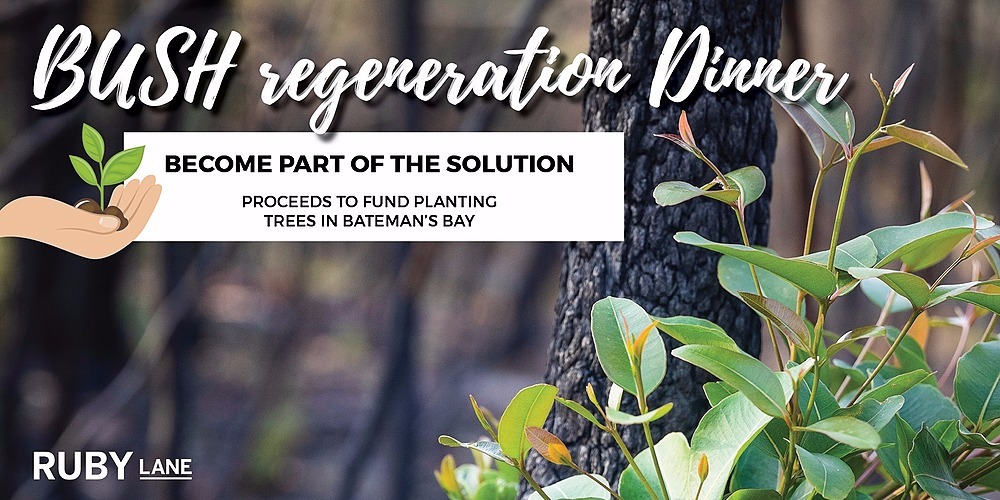
Climate Action Now: What Will It Take To Make It Happen?
- Zali Stegall (Independent MP for Warringah
- Kristina Keneally (Labor Senator for NSW)
- David Shoebridge (Greens NSW Upper House MP)
- Vivienne Paduch (School Strike 4 Climate Activist)
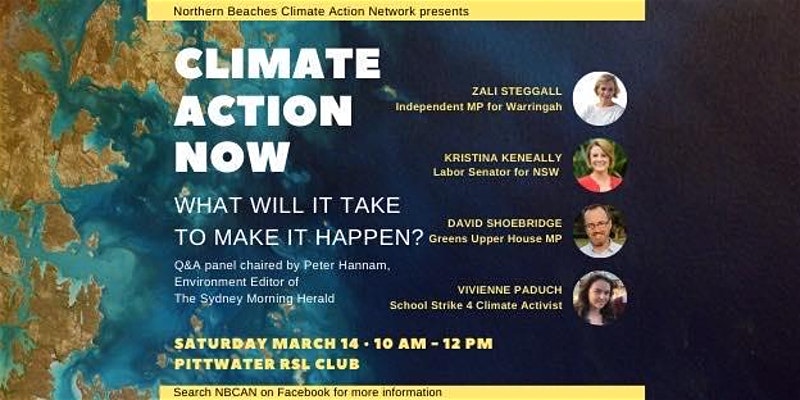
Rock Platform Tour
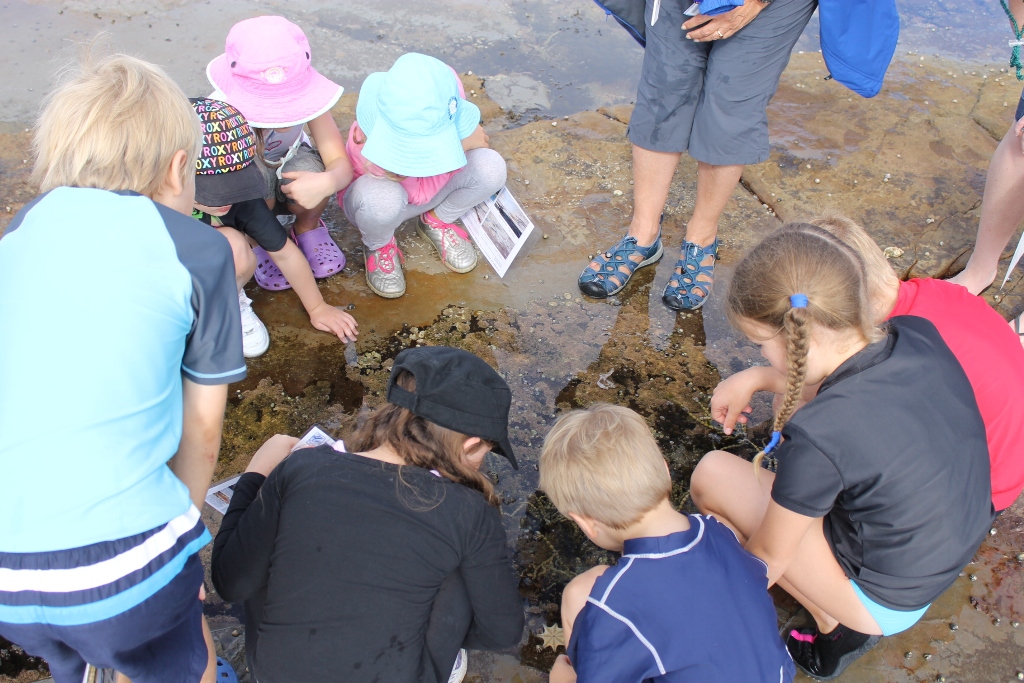
Bushcare In Pittwater
Where we work Which day What time
Avalon
Angophora Reserve 3rd Sunday 8:30 - 11:30am
Avalon Dunes 1st Sunday 8:30 - 11:30am
Avalon Golf Course 2nd Wednesday 3 - 5:30pm
Careel Creek 4th Saturday 8:30 - 11:30am
Toongari Reserve 3rd Saturday 9 - 12noon (8 - 11am in summer)
Bangalley Headland 2nd Sunday 9 to 12noon
Bayview
Winnererremy Bay 4th Sunday 9 to 12noon
Bilgola
North Bilgola Beach 3rd Monday 9 - 12noon
Algona Reserve 1st Saturday 9 - 12noon
Plateau Park 1st Friday 8:30 - 11:30am
Church Point
Browns Bay Reserve 1st Tuesday 9 - 12noon
McCarrs Creek Reserve Contact Bushcare Officer To be confirmed
Clareville
Old Wharf Reserve 3rd Saturday 8 - 11am
Elanora
Kundibah Reserve 4th Sunday 8:30 - 11:30am
 Mona Vale
Mona Vale Mona Vale Beach Basin 1st Saturday 8 - 11am
Mona Vale Dunes 2nd Saturday +3rd Thursday 8:30 - 11:30am
Newport
Bungan Beach 4th Sunday 9 - 12noon
Crescent Reserve 3rd Sunday 9 - 12noon
North Newport Beach 4th Saturday 8:30 - 11:30am
Porter Reserve 2nd Saturday 8 - 11am
North Narrabeen
Irrawong Reserve 2nd Saturday 2 - 5pm
Palm Beach
North Palm Beach Dunes 3rd Saturday 9 - 12noon
Scotland Island
Catherine Park 2nd Sunday 10 - 12:30pm
Elizabeth Park 1st Saturday 9 - 12noon
Pathilda Reserve 3rd Saturday 9 - 12noon
Warriewood
Warriewood Wetlands 1st Sunday 8:30 - 11:30am
Whale Beach
Norma Park 1st Friday 9 - 12noon
Western Foreshores
Coopers Point, Elvina Bay 2nd Sunday 10 - 1pm
Rocky Point, Elvina Bay 1st Monday 9 - 12noon
Gardens And Environment Groups And Organisations In Pittwater
Pittwater Reserves
Logging Is Due To Start In Fire-Ravaged Forests This Week. It’s The Last Thing Our Wildlife Needs
March 2, 2020
By David Lindenmayer, Professor, The Fenner School of Environment and Society, Australian National University
and Doug Robinson, Honorary Visiting Fellow, Department of Ecology, Environment and Evolution, La Trobe University
New South Wales’ Forestry Corporation will this week start “selective timber harvesting” from two state forests ravaged by bushfire on the state’s south coast.
The state-owned company says the operations will be “strictly managed” and produce timber for power poles, bridges, flooring and decking.
Similarly, the Victorian government’s logging company VicForests recently celebrated the removal of sawlogs from burnt forests in East Gippsland.
VicForests says it did not cut down the trees - they were cut or pushed over by the army, firefighters or road crews because they blocked the rood or were dangerous. The company said it simply removed the logs to put them “to good use”.
However the science on the impacts of post-fire logging is clear: it can significantly impair the recovery of burned ecosystems, badly affect wildlife and, for some animal species, prevent recovery.
We acknowledge that for safety reasons, some standing and fallen burnt trees must be removed after a fire. But wherever possible, they should remain in place.
Damaging effects
Hollows in fire-damaged trees and logs provide critical habitat for animal species trying to survive in, or recolonise, burned forests.
Detailed studies around the world over the past 20 years, including in Australia, have demonstrated the damage caused by post-fire logging.
Indeed, the research shows post-fire logging is the most damaging form of logging. Logging large old trees after a fire may make the forests unsuitable habitat for many wildlife species for up to 200 years.
Long-term monitoring data from extensive field surveys shows hollow-dependent mammals, such as the vulnerable greater glider, generally do not survive in areas burned and then logged. Research by the lead author, soon to be published, shows populations are declining rapidly in landscapes dominated by wood production.
Forests logged after a fire have the lowest bird biodiversity relative to other forests, including those that burned at high severity (but which remain unlogged). Critical plants such as tree ferns are all but eradicated from forests that have been burned and then logged.
Soils remain extensively altered for many decades after post-fire logging. This is a major concern because runoff into rivers and streams damages aquatic ecosystems and kills organisms such as fish.
A double disturbance
Fire badly disrupts forest ecosystems. Animals and plants then begin recovering, but most forests and the biota they support simply cannot deal with the second intense disturbance of logging so soon after a first one.
For example, young germinating plants are highly vulnerable to being flattened and destroyed by heavy logging machinery. And in an Australian context, post-fire logging makes no sense in the majority of eucalypt-dominated ecosystems where many tree species naturally resprout. This is an essential part of forest recovery.
Logs provide shade, moisture and shelter for plants, and rotting timber is food for insects - which in turn provide food for mammals and birds.
Living and dead trees are also important for fungi — a food source for many animals, including bandicoots and potoroos which have been heavily impacted by the fires.
Similarly on burnt private land, removing damaged and fallen trees will only hinder natural recovery by removing important animal habitat and disturbing the soil. If left, fallen trees will provide refuge for surviving wildlife and enable the natural recovery of forests.
While the sight of burnt timber can be disheartening, landholders should resist the urge to “clean up”.
It doesn’t add up
Research in North America suggests debris such as tree heads, branches and other vegetation left by post-fire logging not only hinders forest regeneration, but can make forests more prone to fire.
And the economics of logging, particular after a fire, is dubious at best. Many native forest logging operations, such as in Victoria’s East Gippsland, are unprofitable, losing millions of taxpayer dollars annually.
Timber is predominantly sold cheaply for use as woodchips and paper pulp and fire-damaged timber is of particularly poor quality. Even before the fires, 87% of all native forest logged in Victoria was for woodchips and paper pulp.
Post-fire logging certainly has no place in national parks. But for the reasons we’ve outlined, it should be avoided even in state forests and on private land. Million hectares of vegetation in Australia was damaged or destroyed this fire season. The last thing our forests need is yet more disturbance.
This article was published first in The Conversation, republished under a Creative Commons licence, click here to read the original.
_______________________________________________________________________
VicForests response: VicForests told The Conversation
that timber currently being removed by VicForests, at the direction of the Chief Fire Officer, is from hazardous trees that were cut or knocked over to enable the Princes Highway to be re-opened.
It said the timber would be used for fence restoration, firewood and to support local mills “protecting jobs, incomes and families. It would otherwise be left in piles on the side of the highway”.
“Any further post-fire recovery harvesting will occur in consultation with government including biodiversity specialists and the conservation regulator, following careful assessment and protection of high conservation values,” VicForests said.
The company said post-fire recovery harvesting, particularly of fire-killed trees, does not increase fire risk.
“Sensitive harvesting including the retention of habitat trees and active re-seeding is more likely to result in a successfully regenerated forest and a supportive environment for threatened species. This regenerating forest will have the same fire risk as natural regeneration following bushfire.”
_______________________________________________________________________
Forestry Corporation of NSW response:
Forestry Corporation of NSW said in a statement that small-scale selective timber harvesting operation will begin on the south coast this week.
The company’s senior planning manager Dean Kearney said the Environment Protection Authority, with the input of scientific experts “has provided Forestry Corporation with site-specific conditions for selective timber harvesting operations in designated parts of Mogo and South Brooman State Forests. These areas were previously set aside for timber production this year but have now been impacted by fire.”
“Strictly-managed selective timber harvesting will help prevent the loss of some high-quality timber damaged by fire, including material that will be in high demand for rebuilding, while ensuring the right protections are in place for key environmental values, particularly wildlife habitat, as these forests begin regenerating,” he said.
“The harvesting conditions augment the already strict rule set in place for forest operations and include requirements to leave all unburnt forest untouched and establish even more stringent conditions to protect water quality, hollow-bearing trees and wildlife habitat.”
Seeds Of Hope For Koalas
March 3, 2020
To celebrate World Wildlife Day, the NSW Government has announced 6 new koala habitat restoration projects, which include planting 50,000 koala feed tree seedlings, in the Northern Rivers and Far South Coast regions.
Environment Minister Matt Kean said he was pleased to provide up to $150,000 in funding to a wide range of organisations, including Lismore City Council, Friends of the Koala, Far South Coast Landcare Association, Border Ranges-Richmond Valley Landcare Network and Bangalow Koalas to restore koala habitat.
"While we're still determining the full impact of this season's bushfires on koalas and other wildlife, we know that more than 25% of koala habitat in eastern NSW was affected by fires," Mr Kean said.
"By planting more trees and restoring habitats, we can help our koalas and other native animals recover from these devastating bushfires.
"These projects also acknowledge the passion of our regional communities and local organisations, who spend their time and money caring for their local koala populations and getting involved in tree planting, weed control and site preparation activities.
"These grants are part of the $1 million investment to deliver local actions in partnership with the community under the NSW Koala Strategy."
Environment Minister Matt Kean with a koala
The NSW Koala Strategy, which provides $44.7 million in funding, is the biggest commitment by any State government to secure koalas in the wild. It sets out the NSW Government's long-term goal to stabilise then increase koala populations across New South Wales.
The NSW Koala Strategy is supported by the Saving our Species program, which is working to secure the future of NSW threatened plants and animals, including the koala.
Further information on how the NSW Government is supporting conservation through community actions is available on NSW Koala Country, a website that celebrates some of the inspiring people and organisations who dedicate their time to helping protect our koalas.
Find out more about the NSW Koala Country website at NSW Koala Country
Koala tree seedlings - Photo: Kathryn French-Grafton Production Nursery, Forestry Corporation of NSW
Ancient Australian Trees Face Uncertain Future Under Climate Change
March 3, 2020: Portland State University
Tasmania's ancient rainforest faces a grim future as a warming climate and the way people used the land have brought significant changes to the island state off mainland Australia's southeastern coast, according to a new Portland State University study.
The study holds lessons not only for Australia -- whose wildfires have been dominating headlines in recent months -- but for other areas of the world that are seeing drying conditions and increased risk of wildfires.
Andrés Holz, the study's lead author and associate professor of geography at PSU's College of Liberal Arts and Sciences, studied the population decline of King Billy pine trees (Athrotaxis selaginoides), a coniferous species native to Tasmania that dates back to when Australia was part of a supercontinent called Gondwana. This paleoendemic tree species occupies large tracks of the UNESCO World Heritage Area in Tasmania and is considered a vulnerable species by the World Conservation Union.
The study found that increasingly frequent fires caused by regional dry and warming trends and increased ignitions -- by humans during the early arrival of Europeans to Tasmania and more recently due to increases in lightning -- are breaching fire refugia. Refugia are protected areas that don't burn or, if they do, are areas where trees survive most wildfires.
"The areas that have survived are in these very protected refugia," Holz said. "The refugia can be a bit of a buffer, but how long is that going to last? We might be witnesses of a whole lineage of a very ancient plant species that is going to go extinct."
Holz said that the changes in how wildfires function, due to both management and climate change, are driving analogous ecosystem transformations not only in Australia, but also western North America and South America's Patagonia region.
Untangling the complex relationships between landscape, fire disturbance, human fire usage, climate variability and anthropogenic climate change is key to understanding the rapid population declines of King Billy pines.
The study found that the trees regenerated continuously before 1800AD under indigenous land management, but population declines followed European colonization as they cleared land for logging and mining. This coincided with a period of more fire-prone climate and weather conditions.
"Fires co-occur with dry, warm periods and those periods are more and more frequent now," Holz said, adding that the Billy King pines need wet and cool conditions to thrive. "We're moving away, climatically speaking, from the drivers that help the species."
Holz and the research team also found few seedlings or saplings in the study area, meaning that recovery of the original forest is unlikely. Instead, the replacement forest has become a tall-shrubland ecosystem with lower species diversity that in turn are more flammable and recover more quickly following fire.
"The next time there are the same climate conditions and there's a spark, a lightning strike or an accidental fire, the plants themselves are now more dense in space and more flammable than before and have a higher change of burning again," Holz said. "It becomes a vicious cycle that is hard to break."
The study said that as these critical climate-fire associations increase in strength, the survival of King Billy pines may require increasingly targeted fire management, including rapid attack of uncontrolled fires.
Andrés Holz, Sam W. Wood, Carly Ward, Thomas T. Veblen, David M. J. S. Bowman. Population collapse and retreat to fire refugia of the Tasmanian endemic conifer Athrotaxis selaginoides following the transition from Aboriginal to European fire management. Global Change Biology, 2020; DOI: 10.1111/gcb.15031
Swamp Wallabies Conceive New Embryo Before Birth -- A Unique Reproductive Strategy
March 2, 2020: Forschungsverbund Berlin
Marsupials such as kangaroos or wallabies are known for their very different reproductive strategy compared to other mammals. They give birth to their young at a very early stage and significant development occurs during a lengthy lactation period in which the offspring spends most of its time in a pouch. Although in some marsupials new ovulation happens only a few hours after giving birth, the regular consecutive stages of ovulation, fertilization, pregnancy and lactation are respected -- with one exception: Reproduction specialists from the Leibniz Institute for Zoo and Wildlife Research (Leibniz-IZW), Germany, and the University of Melbourne, Australia, recently demonstrated that swamp wallabies ovulate, mate and form a new embryo before the birth of the previous offspring. They thereby continuously support embryos and young at different development stages before and after birth. These findings are published in the Proceedings of the National Academy of Sciences of the United States of America.
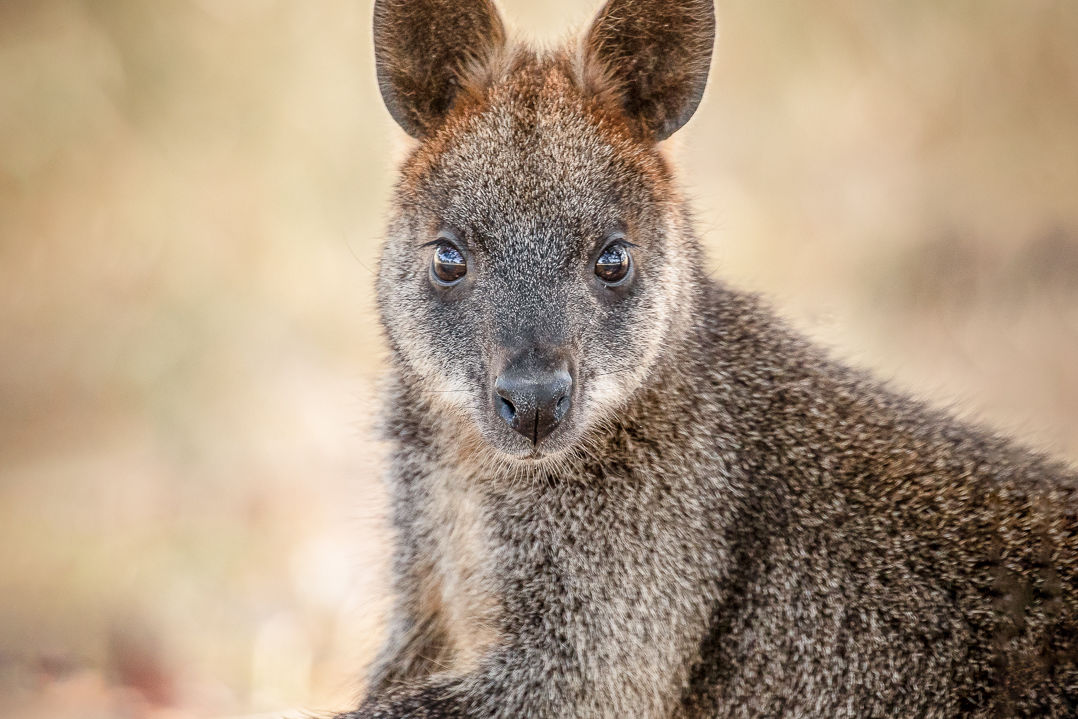
Swamp wallaby - Photo: Geoff Shaw, University of Melbourne
Using high-resolution ultrasound to monitor reproduction in swamp wallabies during pregnancy, Prof Thomas Hildebrandt (Leibniz-IZW and University of Melbourne), Dr Brandon Menzies and Prof Marilyn Renfree (both from University of Melbourne) were able to confirm what has been suspected for a long time: swamp wallaby females ovulate, mate and form a new embryo whilst already carrying a full-term fetus that they will soon give birth to. The new embryo enters embryonic diapause until the new-born offspring leaves the pouch nine months later. Thus, when the embryonic diapause is included, females are continuously pregnant throughout their reproductive life, a unique reproductive strategy that completely blurs the normal staged system of reproduction in mammals.
This phenomenon is made possible by two anatomically completely separated uteri and cervices connected to ovaries by their oviducts. "This is true for all marsupials, but the unique overlapping reproductive cycles seem to be a special feature of the swamp wallabies," says Renfree. Normally, ovulation alternates between the two ovaries. "All female macropodid marsupials -- essentially kangaroos, wallabies and a few other groups of species -- except the swamp wallaby have an oestrous cycle longer than the duration of their pregnancy, so females come into oestrus, ovulate and mate within hours after birth." It has been suspected for some time that swamp wallabies might conceive during an active pregnancy, because the oestrous cycle of the swamp wallaby is shorter than the duration of their pregnancy and there have been reports about mating before the birth of the previous offspring. Such a "superfetation" has previously been only described (by Leibniz-IZW scientists) for the European brown hare where females copulate again three to four days before the birth of the incumbent young, forming new conceptuses during an active pregnancy.
In order to confirm superfetation in swamp wallabies, the scientists removed the pouch young of ten females to reactivate the dormant blastocysts (early stage embryo). They then monitored the development of the blastocyst in four of these ten females using high-resolution ultrasound. All females gave birth at around 30 days after the young had been removed. Parallel to the embryo development in one uterus, the scientists closely examined the opposite ovary. There, follicles started to appear and grow. At day 26 of the pregnancy the ultrasound examination showed that the conceptus had developed into a fetus with the head, limbs and heartbeat clearly visible -- and at day 28 and 29 the largest follicle in the opposite (contralateral) ovary had ovulated and a new corpus luteum was evident. The other six females that were not scanned with ultrasound were regularly examined for sperm. Sperm was identified in the urogenital tract one to two days before birth but at no other time. "These results clearly demonstrate that swamp wallabies ovulate and mate one to two days before birth, during an existing pregnancy," says Hildebrandt.
Pregnancies of eutherian mammals (most mammals, i.e. the most taxonomically diverse of the three branches of mammals) greatly exceed the length of the oestrous cycle, so during mammalian evolution, there has been selection pressure to extend the duration of pregnancy. Among marsupials (who form a second taxonomic branch of mammals), gestation in most macropodids encompasses almost the entire duration of the oestrous cycle. The swamp wallaby takes this one step further with its pre-partum oestrus, allowing this marsupial's gestation length to exceed the oestrous cycle length.
Sadly, many of these unique animals have been lost in the current disastrous bushfires in Australia this summer.
Brandon R. Menzies, Thomas B. Hildebrandt, Marilyn B. Renfree. Unique reproductive strategy in the swamp wallaby. Proceedings of the National Academy of Sciences, 2020; 201922678 DOI: 10.1073/pnas.1922678117
The Threatened Species Scientific Committee 10-Point Bushfire Response Plan
March 2, 2020: Australian Government Dept. of Agriculture, Water and the Environment
The Threatened Species Scientific Committee has released its Bushfire Response Plan which was approved by the Minister for the Environment, the Hon Sussan Ley MP, on 2 March 2020. The plan frames the Committee’s response to the 2019-20 bushfires, working with partners, experts and the wider community. The TSSC Bushfire Response Plan sets four key objectives, which align with those of the Wildlife and threatened species bushfire recovery Expert Panel, and ten actions to deliver an efficient and effective response.
The Threatened Species Scientific Committee 10-point Bushfire Response Plan
The Committee is charged with providing the Minister with independent scientific advice to achieve biodiversity conservation outcomes, specifically for threatened species and ecological communities under national environment law.
The Committee will work with partners, experts and the wider community, to enable the statutory response to the 2019-20 bushfires to be timely and robust.
The following TSSC Bushfire Response Plan sets four key objectives, which align with those of the Expert Panel, and ten actions to deliver an efficient and effective response.
A. Prevent extinction and limit decline of native species and ecosystems affected by the 2019-20 fires
Many unlisted species and ecological communities urgently require statutory protection as a result of the 2019-20 fires, and many listed species and ecological communities need re-assessment because their conservation status has deteriorated.
1. Advise the Minister on species that may be eligible for listing and uplisting as quickly as possible:
a. Prioritise species and ecological communities for conservation status review, using the information on species and ecological community fire vulnerabilities, collated by the Wildlife and Threatened Species Bushfire Recovery Expert Panel.
2. Accelerate processes for assessment and re-assessment of these priority species:
a. Update listing assessments for fire-affected species and ecological communities already on the Finalised Priority Assessment List.
b. Defer assessments for other species on the Finalised Priority Assessment List that are not fire-affected, and where listing is unlikely to confer a conservation benefit (e.g. species being considered for listing as Extinct).
c. Fast-track threatened species list alignment for fire-affected species with the States and Territories through the Common Assessment Method.
d. Identify opportunities for collaboration with professionals with the capacity to efficiently create draft assessments to TSSC standards for subsequent review by the TSSC e.g., IUCN specialist groups, other specialist taxonomic groups and the States and Territories.
3. Support immediate post-fire recovery efforts by appending information on fire impacts and key actions to support recovery to the Conservation Advices and Recovery Plans of fire-affected species and ecological communities. Key actions (including cultural practices) will align with the priority activities identified by the Bushfire Recovery Expert Panel.
4. Respond to community interests about the impacts of the 2019-20 fires on biodiversity
a. Accept public nominations for assessment and re-assessment of species and ecological communities at any time and continue to consider them in Proposed Priority Assessment List processes unless clearly ineligible for listing.
b. Engage and consult with Indigenous communities and other stakeholders to improve fire management response in conservation and threat abatement planning.
c. Consider potential for listing/uplisting of species that are highly valued by the community (e.g. Koala) by undertaking preliminary evaluations immediately.
B. Reduce impacts from future fires
5. Update the Conservation Advices for the highest priority fire-affected species and ecological communities to include the impacts of, and management response to, the 2019-20 fires; the potential impacts and management of future fires and the information needs, key conservation actions and resources that will be needed to support longer-term recovery.
6. Complete the assessment of the ‘fire regimes that cause biodiversity decline’ Key Threatening Process and develop guidance on recovery actions to build the resilience of biota to future fires.
C. Learning and continual improvement
7. Document the impact of the 2019-20 fires on statutory lists, as a high-level summary of the overall impacts of the 2019-20 fires on biodiversity.
8. Acknowledge the changed situation following the fires in the application of the listing criteria, review the adaptations adopted by the Committee and distil lessons for future response to biodiversity crisis events.
D. Communicate the TSSC’s role and activities in response to the fires
9. Maintain close communication with the government response, including the Expert Panel, the Threatened Species Commissioner and the Minister for the Environment.
10. In partnership with the Minister’s office and the Department, communicate to the broader conservation sector, Indigenous communities and general public, the TSSC’s planned response to the impacts of the bushfire on biodiversity, including the focus on collaborative action, and provide updates on progress.
Fish School By Randomly Copying Each Other, Rather Than Following The Group
March 2, 2020: University of New South Wales
Fish school by copying each other and changing directions randomly, rather than calculating and adapting to an average direction of the group, a group of scientists co-led by UNSW has shown.
In a study published today in Nature Physics, an international team from Australia, India and UK has shed light on the behavioural dynamics that govern alignment, or collective motion, of cichlid fish -- offering new insights into the dynamics of schooling, and potentially the coordinated behaviour of other animals.
"In the fish that we have studied, schooling turns out to be noise-induced. It's not what anyone traditionally thought it was," says Dr Richard Morris from UNSW Science, co-leader of the study and EMBL Australia group leader in UNSW's Single Molecule Science.
"Noise, in this setting, is simply the randomness arising from interactions between individual fish."
In the study, the researchers present the first experimental evidence of noise-induced ordering, which previously only existed as a theoretical possibility. The interdisciplinary team of ecologists, physicists and mathematicians achieved this by combining the capabilities of their scientific disciplines to integrate experiments with computer simulations and analysis.
"Everyone's been aware of noise-induced phenomena, theoretically, but it's quite rare to find in practice. You can only observe it when the individuals in a study can actually make decisions. For example, you wouldn't find this type of noise-induced behaviour studying electrons or particles," says Dr Morris.
This new model proposed contradicts the standard 'moving average' theories for schooling and herding behaviour, which assume that the animals are capable of estimating the overall direction of the group.
"Every fish only interacts with one other fish at any given time. They either spontaneously change direction, or copy the direction of a different fish. Calculating an average direction of the group -- which was the popular theory until now -- is likely too complicated for a fish to compute," explains Dr Morris.
To study the behavioural dynamics, the researchers filmed schools of 15, 30 and 60 cichlid fish, tracking their trajectories to analyse the mechanism behind mutual alignment, or schooling.
"Smaller groups of fish schooled more coherently than large groups. This is counterintuitive, since the randomness, or noise, from individual interactions plays a bigger role in smaller groups than larger ones," Dr Morris says.
When researchers interpret data, noise is usually an unrelated factor that obscures and distracts from the information, like glare from the sun that you would try to eliminate to get a clearer photo.
In this case, Dr Morris explains that the random copying between pairs of fish gives rise to a different class of noise, and is actually what drives their highly coordinated behaviour. This new insight highlights the importance of noise, showing that noise may encode some important information about behavioural dynamics of fish and other animals.
"Here the signal is the noise. If you ignored the fluctuations completely, you couldn't explain schooling at all."
Beyond fish behaviour, the discovery has the power to reshape the understanding of collective motion in animals, and calls for a revision of how noise is treated in studies of behaviour dynamics.
Jitesh Jhawar, Richard G. Morris, U. R. Amith-Kumar, M. Danny Raj, Tim Rogers, Harikrishnan Rajendran, Vishwesha Guttal. Noise-induced schooling of fish. Nature Physics, 2020; DOI: 10.1038/s41567-020-0787-y
Antarctic Ice Walls Protect The Climate
February 27, 2020: University of Gothenburg
Inland Antarctic ice contains volumes of water that can raise global sea levels by several metres. A new study published in the journal Nature shows that glacier ice walls are vital for the climate, as they prevent rising ocean temperatures and melting glacier ice.
The ocean can store much more heat than the atmosphere. The deep sea around Antarctica stores thermal energy that is the equivalent of heating the air above the continent by 400 degrees.
Now, a Swedish-led international research group has explored the physics behind the ocean currents close to the floating glaciers that surround the Antarctic coast.
"Current measurements indicate an increase in melting, particularly near the coast in some parts of Antarctica and Greenland. These increases can likely be linked to the warm, salty ocean currents that circulate on the continental shelf, melting the ice from below," says Anna Wåhlin, lead author of the study and professor of oceanography at the University of Gothenburg.
"What we found here is a crucial feedback process: the ice shelves are their own best protection against warm water intrusions. If the ice thins, more oceanic heat comes in and melts the ice shelf, which becomes even thinner etc. It is worrying, as the ice shelves are already thinning because of global air and ocean warming," says Céline Heuzé, climate researcher at the Department of Earth Sciences of Gothenburg University.
The stability of ice is a mystery
Inland Antarctic ice gradually moves towards the ocean. Despite the ice being so important, its stability remains a mystery -- as does the answer to what could make it melt faster.
Since the glaciers are difficult to access, researchers have been unable to find out much information about the active processes.
More knowledge has now been obtained from studying the measurement data collected from instruments that Anna Wåhlin and her researcher colleagues placed in the ocean around the Getz glacier in West Antarctica.
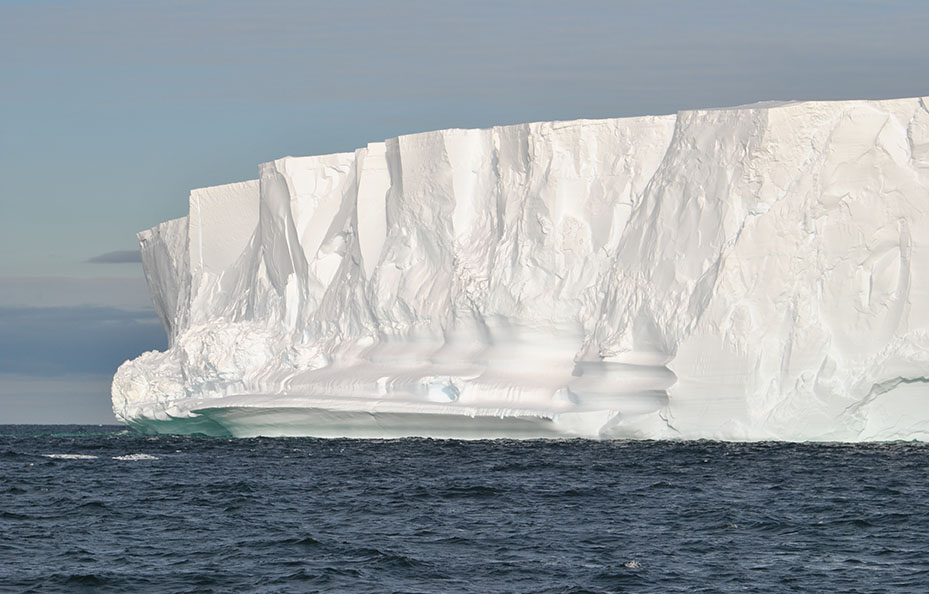
Antarctic glaciers, photo by Anna Wåhlin.
The ice's edge blocks warm seawater
Gertz has a floating section that is approximately 300 to 800 metres thick, beneath which there is seawater that connects to the ocean beyond. The glacier culminates in a vertical edge, a wall of ice that continues 300-400 metres down into the ocean. Warm seawater flows beneath this edge, towards the continent and the deeper ice further south.
"Studying the measurement data from the instruments, we found that the ocean currents are blocked by the ice edge. This limits the extent to which the warm water can reach the continent. We have long been stumped in our attempts to establish a clear link between the transport of warm water up on the continental shelf and melting glaciers.
Now, we understand that only a small amount of the current can make its way beneath the glacier. This means that around two-thirds of the thermal energy that travels up towards the continental shelf from the deep sea never reaches the ice."
Can lead to better prognoses
The results of the studies have provided researchers with a greater understanding of how these glacier areas work.
"From the Getz glacier, we are receiving measurements of heat transport in the ocean that correspond with the melting ice being measured by satellites. This also means that the floating glaciers -- the ice fronts in particular -- are key areas that should be closely monitored. If the ice walls were to disappear, much greater levels of thermal energy would be released towards the ice on land.
Consequently, we no longer expect to see a direct link between increasing westerly winds and growing levels of melting ice. Instead, the increased water levels can be caused by the processes that pump up warmer, heavier water to the continental shelf, for example as low-pressure systems move closer to the continent."
Researchers believe that the studies have provided them with significantly better tools to be able to predict future water levels and create more accurate climate prognoses.
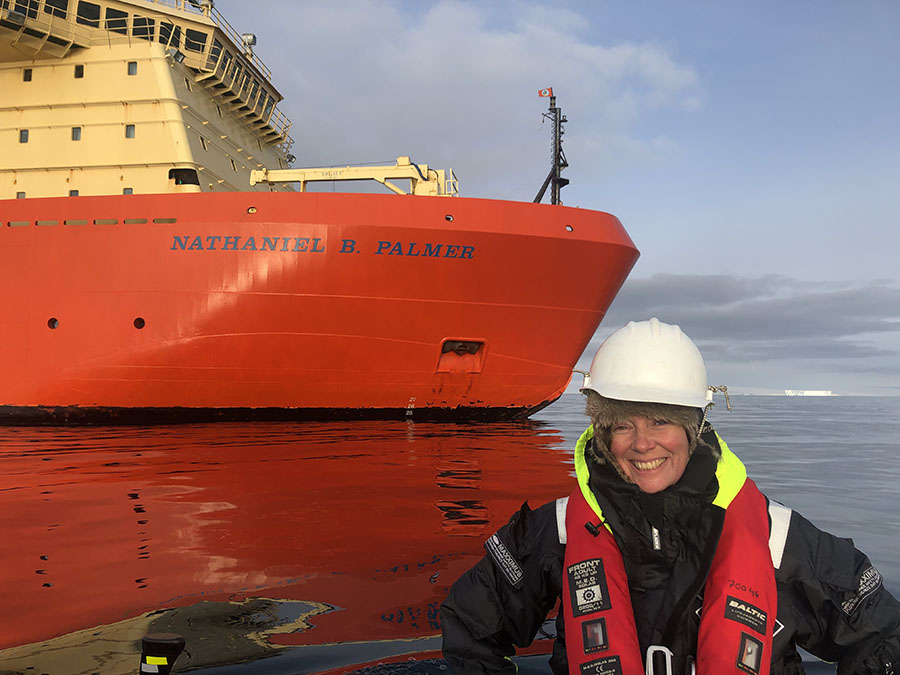
Anna Wåhlin
The continental shelf
A continental shelf is part of the ocean floor that belongs to the tectonic plates. Generally, the continental shelf is 0-500 metres deep and culminates in a continental slope.
A. K. Wåhlin, N. Steiger, E. Darelius, K. M. Assmann, M. S. Glessmer, H. K. Ha, L. Herraiz-Borreguero, C. Heuzé, A. Jenkins, T. W. Kim, A. K. Mazur, J. Sommeria, S. Viboud. Ice front blocking of ocean heat transport to an Antarctic ice shelf. Nature, 2020; 578 (7796): 568 DOI: 10.1038/s41586-020-2014-5
Antarctic Floating Ice Walls Protect Against Warming Seas
March 2, 2020: CSIRO
A recent study published in the journal Nature has explored the physics behind the warming ocean currents around the Antarctic coast, finding floating ice walls offer some protection to the ice sheet by limiting the amount of ocean heat that reaches the ice.
The research was led by the University of Gothenburg and used data and research from Australia's National Science Agency, CSIRO.
Floating ice walls – the edge of the floating ice shelf – are connected to landmass. Icebergs detach from ice shelves to join the ocean.
The Antarctic ice sheet contains enough ice, if melted, to raise global sea levels by tens of metres so improving our understanding of the stability of the Antarctic ice sheet - and the processes which could slow or speed its rate of melt - are of critical importance globally.
Researchers found that floating ice walls partly deflect warm ocean currents that would otherwise penetrate cavities beneath the floating portions of the ice sheet.
CSIRO researcher at the Centre for Southern Hemisphere Ocean Research (CSHOR), Dr Laura Herraiz-Borreguero said one important control on ice loss from Antarctica was what happened where the ice sheet meets the ocean, where a large amount of ice melts.
"The Antarctic ice sheet reaches the ocean through ice shelves, which are the floating edges of the ice sheet," Dr Herraiz-Borreguero said.
"Like a dam wall, these ice shelves slow down the rate at which grounded ice is discharged to the ocean, where it melts and contributes to sea level rise."
The question of how warm ocean currents made their way to the ice sheet, beneath the floating ice shelves, has been a long unanswered question for researchers.
More knowledge has now been obtained by studying data collected from instruments that Dr Herraiz-Borreguero and her colleagues placed in the ocean in front of Getz glacier ice shelf in West Antarctica.
The Getz glacier culminates in a vertical edge, a floating wall of ice that continues 300 to 400 metres down into the ocean.
Warm ocean currents flow beneath this edge, towards the deeper grounded ice.
The researchers found that the warm ocean currents were blocked by the floating ice edge, which limited the extent to which the warm ocean could reach the ice.
The floating ice blocks about two thirds of the thermal energy carried by the ocean currents, which travels up towards the Antarctic ice sheet from the deep Southern Ocean.
The results of the study have provided researchers with a greater understanding of how glacier areas like the Getz work.
"Our work highlights the importance of the floating ice shelves, and in particular, their ice fronts, as key areas that should be closely monitored," Dr Herraiz-Borreguero said.
"If the ice front walls were to thin and disappear, a much greater portion of ocean heat would be delivered towards the grounded Antarctic ice."
Researchers believe the studies provided them with significantly better tools to be able to predict future sea level rise.
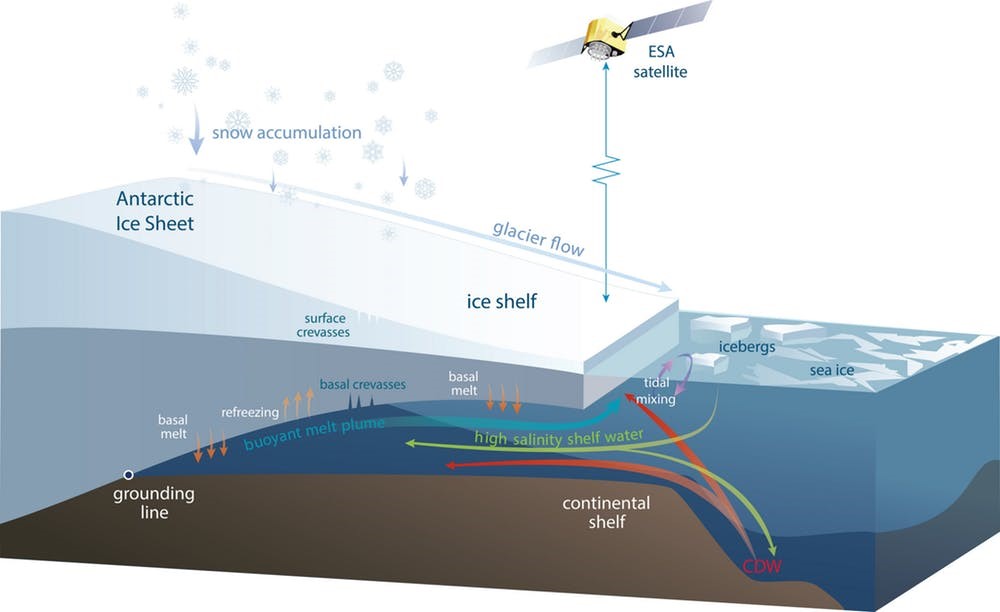
Diagram of an Antarctic ice shelf showing the processes causing the volume changes measured by satellites. Ice is added to the ice shelf by glaciers flowing off the continent and by snowfall that compresses to form ice. Ice is lost when icebergs break off the ice front, and by melting in some regions as warm water flows into the ocean cavity under the ice shelf. Under some ice shelves, cold and fresh meltwater rises to a point where it refreezes onto the ice shelf.
Aussie Bread Tags Collection Points

Five Things You Can Do To Protect Your Hearing At Any Age
March 1, 2020
RESEARCHER: Professor Catherine McMahon
WRITER: Fran Molloy
FACULTY: Faculty of Medicine and Health Sciences, Macquarie University
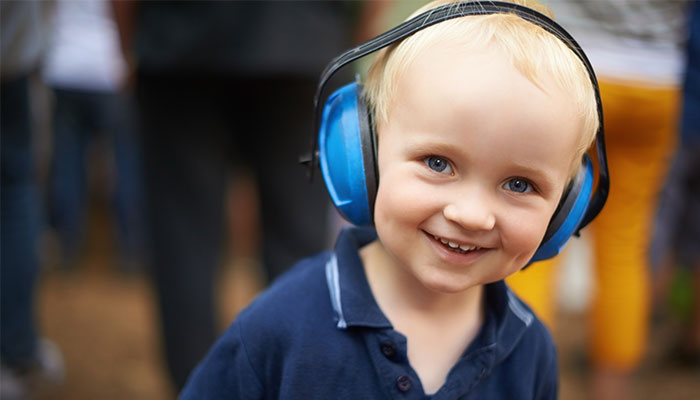 Hearing loss accumulates over our lifespan – so the sooner you act to protect your hearing, the longer you will be able to hear well.
Hearing loss accumulates over our lifespan – so the sooner you act to protect your hearing, the longer you will be able to hear well.
Watch any live music performance on tele these days and if a baby or young child is in the audience, they are likely to be wearing headphones to protect their vulnerable hearing. But everyone else in the audience is equally at risk from the concert-level sound – and noise-induced hearing loss is irreversible.
“We’re urging people across all ages to protect their hearing, because it’s important to preserve what you have,” says Professor Catherine McMahon, an international hearing expert who is working on the World Health Organisation’s first World Report on Hearing.
By the time we turn 65, around one-third of Australians will have measurable hearing loss. While genetic factors that contribute to hearing loss can’t be controlled, the sooner you act to reduce your noise exposure, the more likely you will have better hearing as you get older.
“Manage your exposure to harmful noise levels by knowing how long, and how loud, and how often you are exposed to loud noise – and understanding the safe levels you need to adhere to,” says McMahon.
Here are five ways to keep your hearing healthy:
1. Wear noise-cancelling headphones in noisy environments
Whether you’re on a plane or a train, or you’re on a noisy work site or even if you have construction going on next door, wearing noise-cancelling headphones will protect your hearing, especially if you are trying to listen to music or speech.
“In noisy environments, we often turn up the volume of our TV or our phone call to hear the speech over the loudness of the noise – but if you’re already in a noisy environment, that’s adding to the burden,” says McMahon.
“Noise-cancelling headphones will lower the signal to noise ratio, meaning there’s less damage to your hearing.”
2. Know your noise exposure
How much noise have you been exposed to in a day? Because hearing damage is cumulative, and your body’s hearing organ needs time to recover, it's important to understanding and control your noise exposure is important.
Experiment with adjusting not just the volume, but also the bass, treble and other sound settings on your TV, stereo and other entertainment devices.
Specialised sound meters called noise dosimeters are used to measure noise exposure over a period of time – but there are now smartphone apps (such as the US National Institute for Occupational Safety and Heath - NIOSH - Sound Level Meter App, DecibelX, SPL Meter and Too Noisy) which do the same thing.
3. Take a sound break
If you’re off to a three-day music festival, meeting friends at a nightclub, or even spending the day at a noisy convention, keep in mind that noise exposure is cumulative.
Step away from the louder parts of your environment regularly to reduce the overall time you’re exposed to noise.
4. Check your hearing
Get your hearing checked – make an appointment at a clinic, or give an online test a go. There are a number of free apps which allow you to test your hearing – examples are hearWHO (by the World Health Organisation), Mimi and Signia.
While apps aren’t 100 per cent reliable because there’s no guarantee your headphones and smartphone are calibrated correctly, they can give you a reasonable idea of your hearing levels and whether you should have a formal assessment.
5. Set up a music profile to suit your hearing
There’s a temptation to push up the volume when you’re struggling to hear the lyrics – but making sound louder doesn’t make it easier to understand.
Listen up: If you want to hear well for as many years as possible, the sooner we start protecting our ears the better, says International hearing expert Professor Catherine McMahon.
Mimi is a new audio processing technology company which helps optimise music and other sounds to suit a listener’s unique ‘hearing profile’ – keep an eye out for future integrations with audio and television companies.
Meanwhile experiment with adjusting not just the volume, but also the bass, treble and other sound settings on your TV, stereo and other entertainment devices.

Professor Cath McMahon
Professor Cath McMahon is the Head of Audiology in the Department of Linguistics at Macquarie University
Science Voyage To End In Perth After Mapping 100,000 Km2 Of Seafloor
March 5, 2020: IMAS and CSIRO
An Institute for Marine and Antarctic Studies (IMAS)-led team of scientists and students on board Australia’s research vessel Investigator will return to Perth tomorrow after a two-month voyage that mapped more than 100,000 km2 of Southern Ocean seafloor, much of it for the first time.
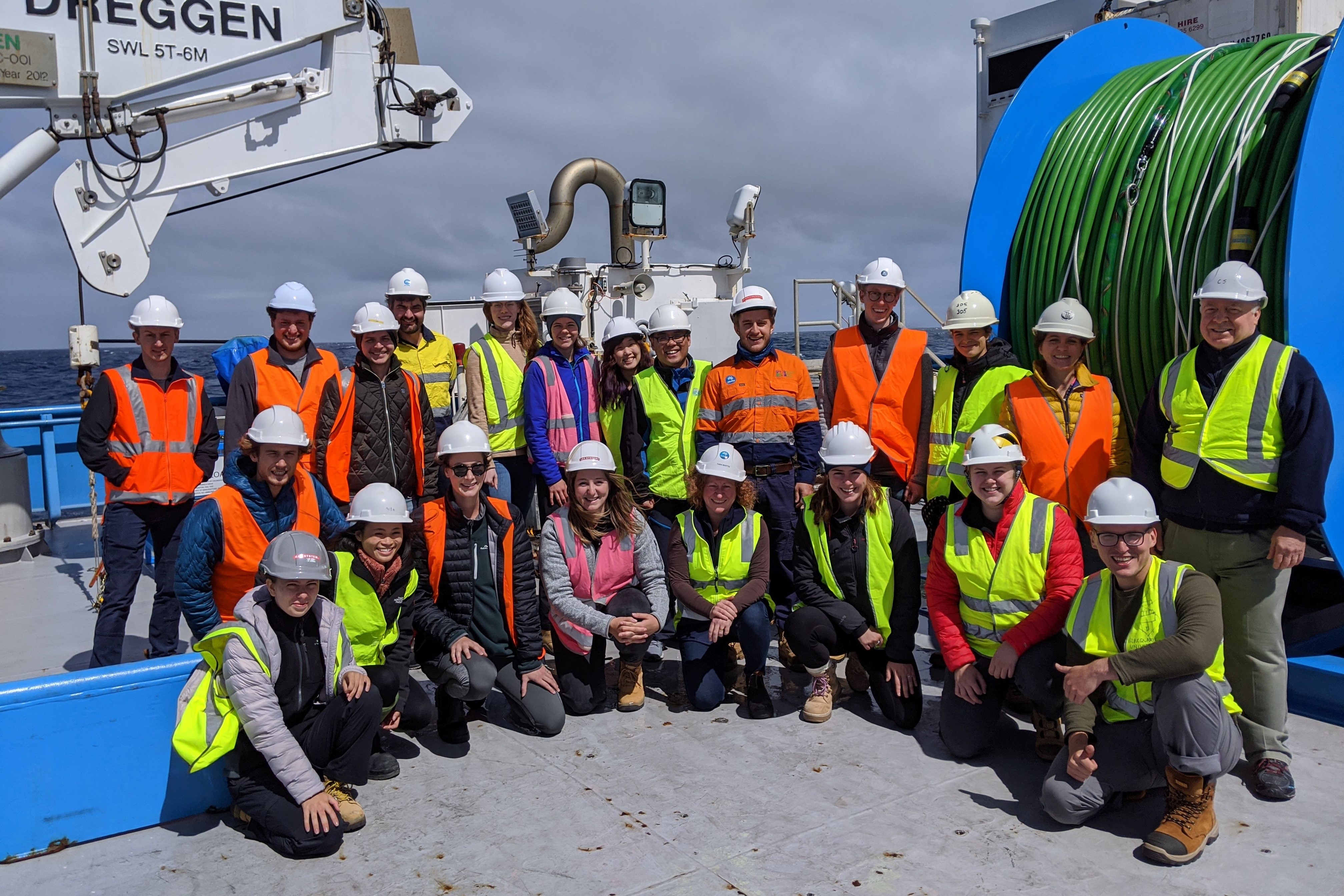
Voyage science team. Image: David Dieckfoss
The main focus of the voyage was to study the ancient rifting, break-up and separation of tectonic plates that split a giant, once-contiguous oceanic plateau into two major Indian Ocean seafloor features, Broken Ridge and the Kerguelen Plateau, to the west and southwest of Perth, respectively.
As well as mapping the seafloor, researchers acquired seismic reflection, sub-bottom profile, gravity, and magnetics data.
Together with rocks dredged from the seafloor, the new data will provide valuable insights into the geological history of the region.
The data and samples collected will also be used to address criteria relevant to consideration, under international law, of an area the size of Switzerland for inclusion in Australia’s marine jurisdiction.
Voyage Chief Scientist, IMAS Professor Mike Coffin, said data and samples from William's Ridge, southeast of the Kerguelen Plateau, could inform deliberations by the United Nations Commission on the Limits of the Continental Shelf (CLCS) about Australia’s entitlement to a continental shelf beyond 200 nautical miles from the coastlines of Heard and McDonald islands.
"We mapped along the entire length of William’s Ridge, defining both its continuity with the Central Kerguelen Plateau and its southeastern terminus for the first time," Professor Coffin said. "This information, along with results from shore-based petrological and geochemical analyses of the rock samples we have collected, will be important criteria for any future submissions to the UN Commission.
"In 2008 the Commission noted that the data Australia submitted for William’s Ridge seemed to give only indirect evidence of its nature and origin, and the Commission was of the opinion that the geological origin of William's Ridge remained unresolved. Therefore, the Commission did not consider it justified for William's Ridge to be regarded as a submarine elevation that is a natural component of the continental margin."
Professor Coffin said scientists and students were able to carry out a wide range of imaging and sampling during the voyage.
"The Kerguelen Plateau and adjacent William’s Ridge were once contiguous with Broken Ridge, which is now 2700 kilometres to the north after separating 43 million years ago.
"The research we have undertaken during this voyage will help us to understand better the fundamental tectonic, volcanic, and geodynamic processes involved in the evolution of this part of the ocean.
"The seafloor structures we have mapped are complex but have two consistent trends, one parallel to the axis along which the two features broke up and the other at an acute angle to it.
"After we return to port our exceptional multidisciplinary international team of shore-based scientists will begin analysing our data and samples from areas that have never before been studied in this level of detail," Professor Coffin said.
The voyage included scientists and students from Geoscience Australia, Macquarie University, University of Queensland, GFZ German Research Centre for Geosciences, James Cook University, University of Western Australia, College of the Atlantic, and Institute of Oceanology, Chinese Academy of Sciences .
The project also involves shore-based researchers from the Alfred Wegener Institute for Polar and Marine Research, University of Cambridge, Oregon State University , Natural History Museum of Denmark , and GEOMAR Helmholtz Centre for Ocean Research Kiel .
The Investigator is Australia's only research vessel dedicated to blue-water research and is owned and operated by CSIRO.
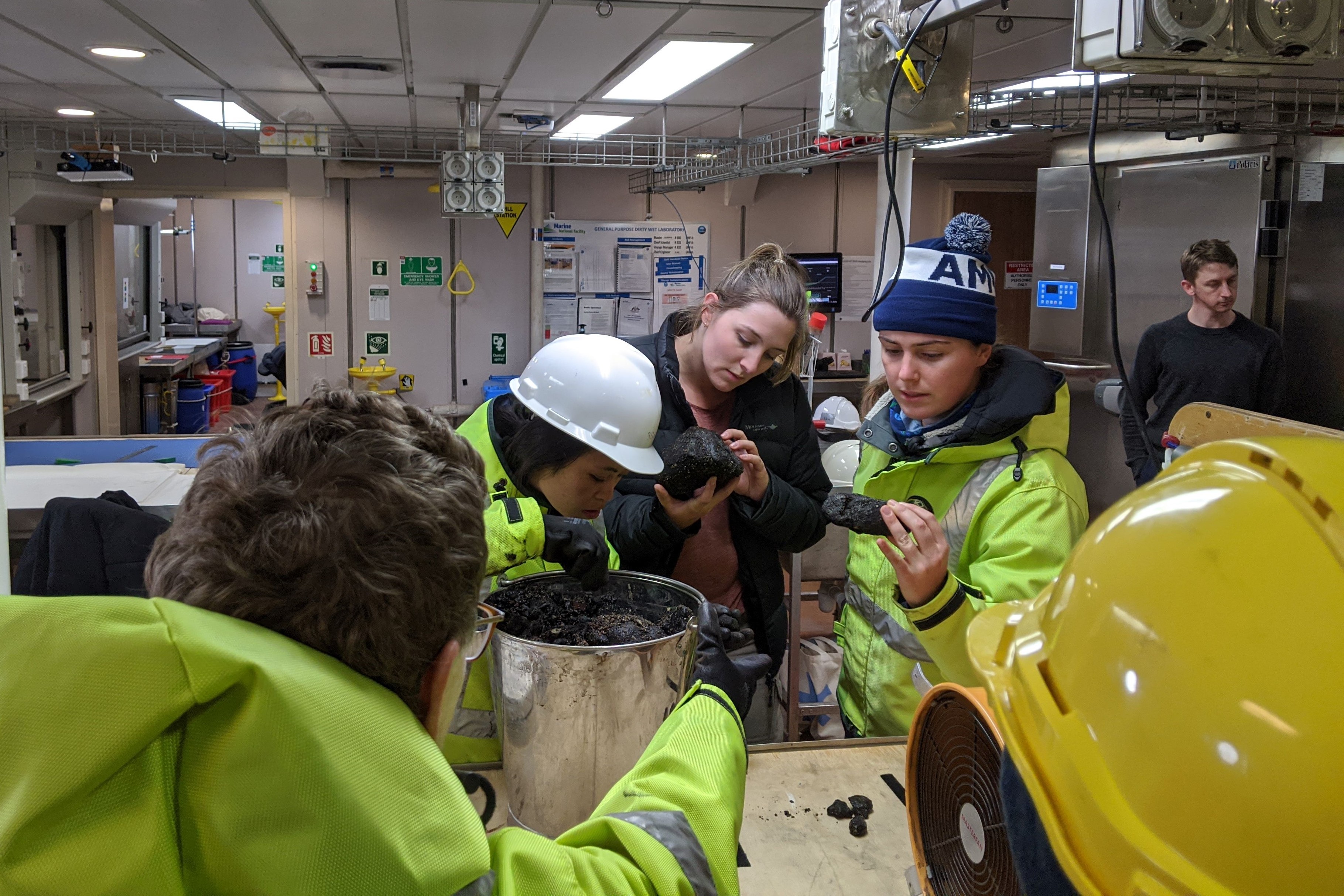
Researchers examine rocks from seafloor dredge. Image: David Dieckfoss
Another Rate Cut; Another Pay Cut For Pensioners
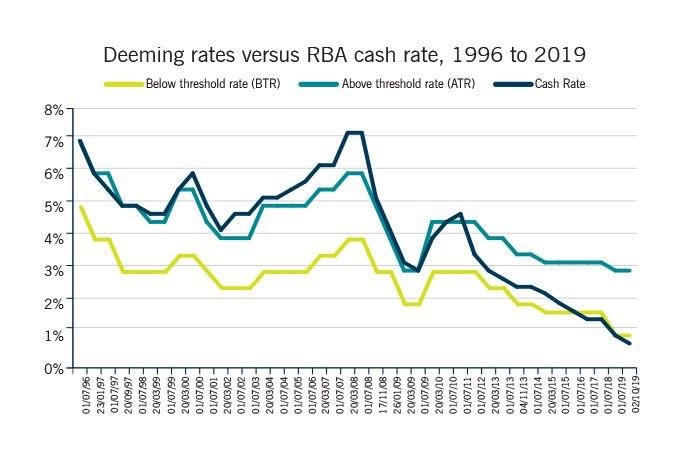
Seniors' Hurdles – New Research On Barriers To Physical Activity
- exercising with a friend or group
- participating in a team sport
- owning a dog which requires regular exercise.
Penalties Now Apply For Drivers Caught Using Their Mobile Phone

Lifeline Classic 2020
The Software That Sent Humans To The Moon
Published March 6, 2020 by TED-Ed.
The Apollo 11 moon landing was about the astronauts, mission control, software and hardware all working together as a seamless integrated system. None of which would have been possible without the contributions of one engineer: Margaret Hamilton. Who was this pioneer? Matt Porter and Margaret Hamilton detail how a woman and her team launched the software that took mankind to the Moon.
Lesson by Matt Porter & Margaret Hamilton, directed by TOTEM Studio.
View full lesson: https://ed.ted.com/lessons/the-softwa...
International Women's Day Celebrated At The 2020 Sydney Surf Pro.
MANLY BEACH, SYDNEY
Friday, 6 March 2020
By Surfing NSW
Over 50 people gathered at the 2020 Sydney Surf Pro at Manly Beach to celebrate the upcoming International Women’s Day and female growth in the sport.
A panel that consisted of local Northern Beaches World Surf League (WSL) Qualifying Series (QS) surfers Alysse Cooper (Queenscliff) and Tru Starling (Narrabeen), promising grommet Ruby Trew (Seaforth), Manly Surf School owner Matt Grainger, Manly Longboard Club’s Kate Moran, WSL commentator and former professional surfer Jess Grimwood and Qualifying Series surfer Giada Legati (Indonesia) all spoke about their personal experiences and the part they play with women’s surfing.
“Growing up, I was extremely fortunate to watch surfers like Layne Beachley at Queenscliff and I had a front-row seat to the role they played in getting the sport to where it is now,” said Cooper. “I think women’s surfing has grown so much since I was a kid – thanks to people like Layne – to the point where we now receive equal prize money on the QS and Championship Tour and we’re receiving more opportunities than ever.”

Photo by Ethan Smith/Surfing NSW
Surfing NSW also opened the floor for input and feedback to increase female participation, promote leadership and encourage inclusivity from attendees and the panelists.
Surfing NSW will be making further announcements on women’s programs, events, and initiatives as part of our new "Her Wave" program.
Surfing NSW CEO Luke Madden added that “Her Wave” will form a major part of the Surfing NSW organisation moving forward.
“Her Wave will be a focal point for our organisation moving forward for Surfing NSW and we will be looking to incorporate it across all disciplines of board riding with the goal of increasing female participation and inclusivity,” said Madden.
For more information on the program, please contact info@surfingnsw.com.au
The Sydney Surf Pro WSL Challenger Series event will run from March 8 through 14, 2020. Please visit WorldSurfLeague.com or download the free WSL App for more information on the Sydney Surf Pro Junior and the newly announced WSL Challenger Series.
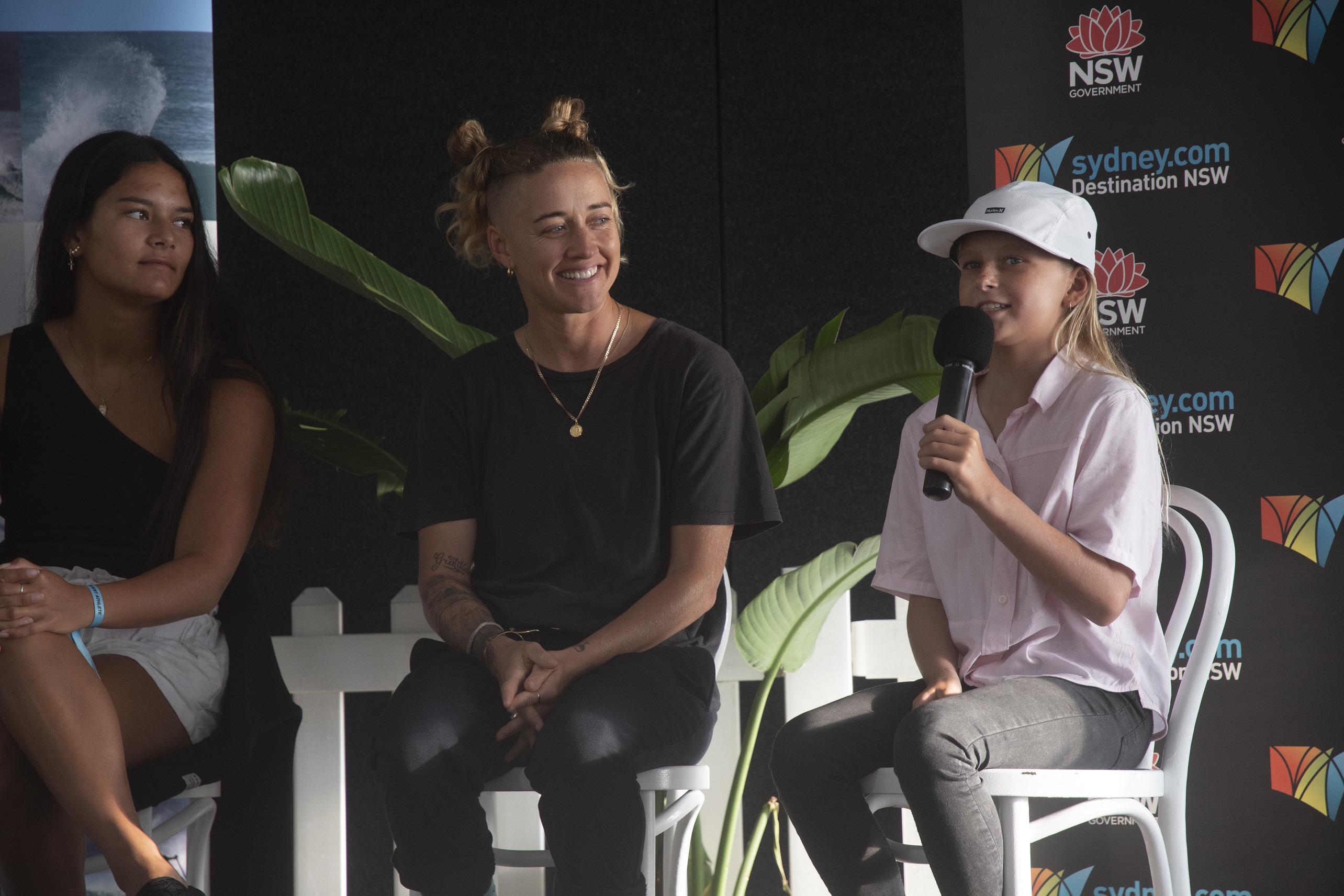
Photo by Ethan Smith/Surfing NSW

Photo: Over 50 people gathered at the 2020 Sydney Surf Pro today to celebrate the upcoming International Women’s Day and female growth in the sport. Image by Ethan Smith/Surfing NSW
Academic Adversity Does Not Guarantee Resilience In High School Students
Early Start Key To Easing The Trajectory Of Childhood Obesity
Scientists Seize Rare Chance To Watch Faraway Star System Evolve

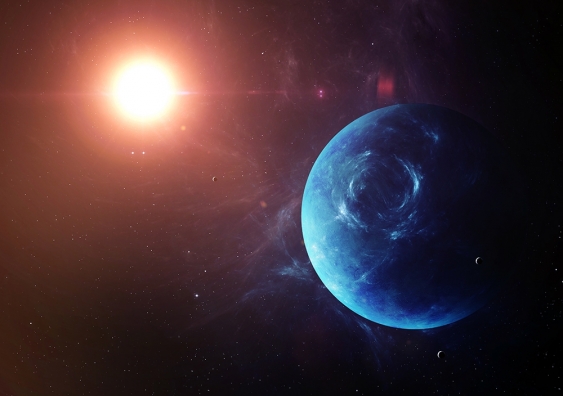
Geologists Determine Early Earth Was A 'Water World' By Studying Exposed Ocean Crust
Australian Tiny Homes: Free Webinar
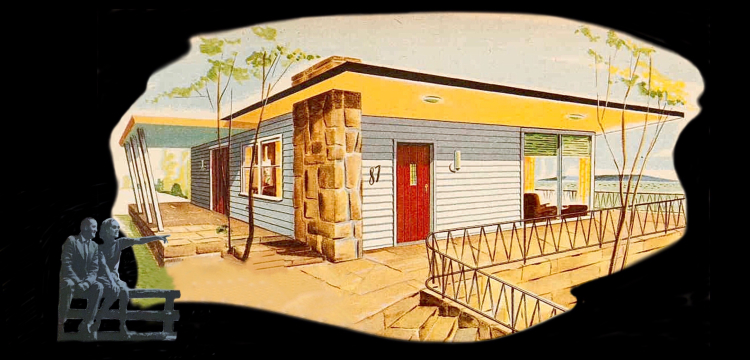
NSW Building Certification Bill Still Lets Developers Off The Hook
New Study Links Swipe-Based Dating Apps To Poor Mental Health
- 20% of current dating app users reported significantly higher psychological distress as a result of app use (vs 8% of people who did not use a dating app).
- 19% of current dating app users reported significantly higher depressive symptoms as a result of app use (vs 9% of people who did not use a dating app).
- People who used dating apps daily were 4 times more likely to report psychological distress or depressive symptoms than those who never used a dating app.
- 40% of current or past SBDA users reported app interaction had a positive impact on their self-esteem.
- 39% of current or past dating app users said they had previously entered into a serious relationship with someone they had met on a SBDA.
- 77% of current and past SBDA users said they had met people face-to-face through an app, and 26% had met more than five people.
Designing A City Without Cars – For The Sake Of The Kids
Disclaimer: These articles are not intended to provide medical advice, diagnosis or treatment. Views expressed here do not necessarily reflect those of Pittwater Online News or its staff.